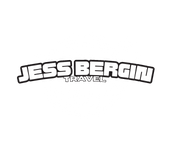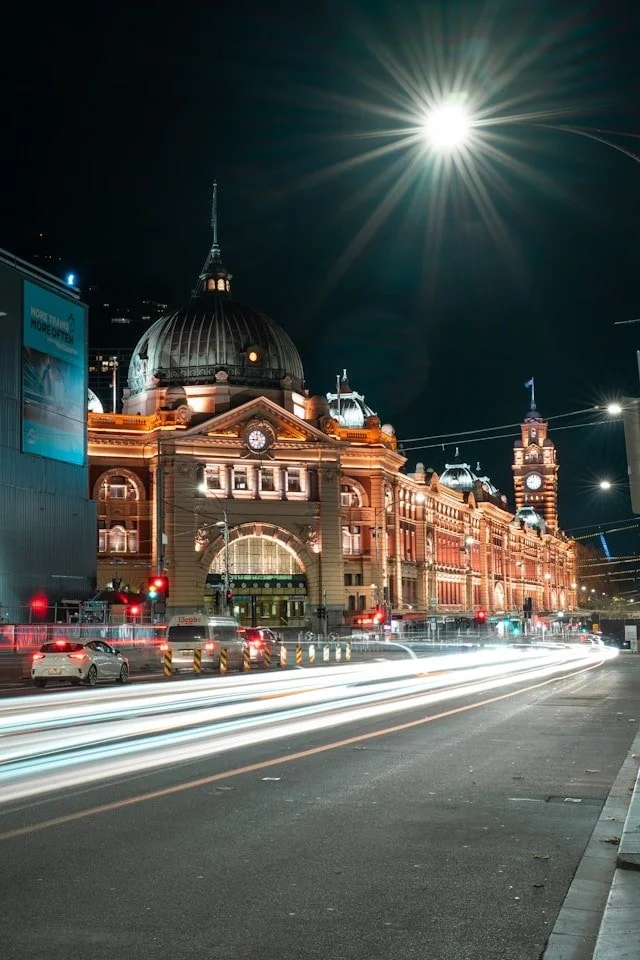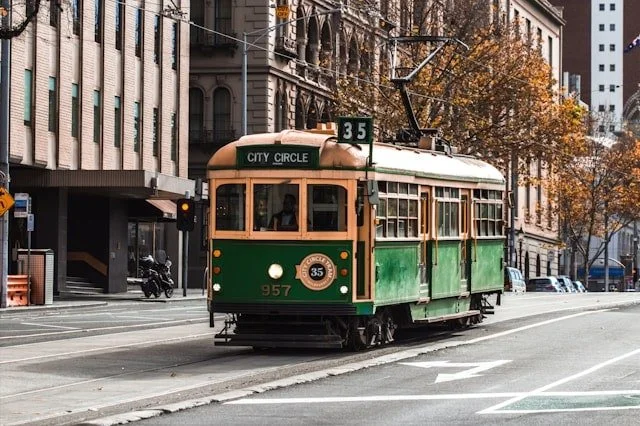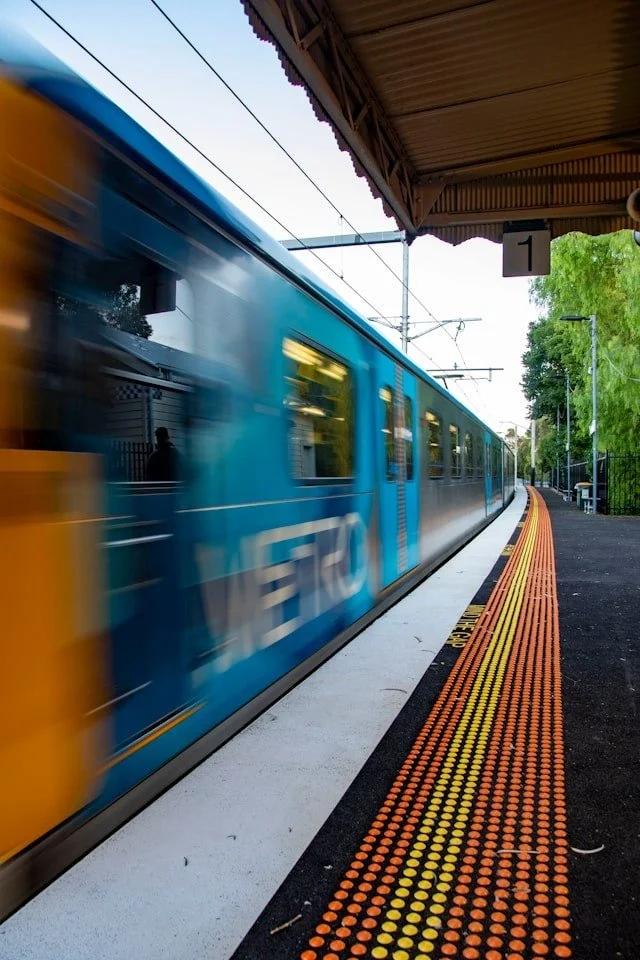How to Get Around Melbourne
So… you’ve booked your trip to Victoria, now it’s time to figure out the logistics. Endless events, sprawling streets and must-see landmarks are spread around the city, so let’s help you figure out how to get around Melbourne.
Victoria’s capital is crowned as the sports, culture, cuisine and style capital of Australia. Oh yeah, and it also claims to have the best coffee in the world. As a proud Melburnian, I can confirm that it lives up to all the hype.
Spending Sundays in rooftop bars, admiring art in the free galleries and screaming my lungs out at the famous AFL football matches are all highlights of living in Melbourne. And as a local, life never gets boring.
Whether you’re visiting for a week-long trip or a weekend getaway, there are plenty of things to pack into your Melbourne itinerary. But if it’s your first time here in the city, I know that getting around can seem a little overwhelming. Trams, trains, buses… It’s a colourful cocktail, that’s for sure.
Melbourne is massive and as diverse as it gets, from the hipster hot spots in Fitzroy to the seaside parties in St Kilda. If you don’t want to miss out on a thing, here’s everything you need to know about how to get around Melbourne.
How to Get Around Melbourne
Navigating Melbourne can be an adventure in itself. Heck, it can even be a little fun. This bustling metropolis has an extensive transportation network and unique finds, from the free City Circle tram to the V-Line regional trains.
With so many ways of getting around, it’s easy to tick all the best things to do off your bucket list. Mastering the art of getting around Melbourne is a breeze, once you get the basics down pat.
Here’s what we’ll cover in this in-depth guide:
Public Transport in Melbourne
Cycling in Melbourne
Walking in Melbourne
Car Rental in Melbourne
Ride-Sharing and Taxis in Melbourne
Melbourne’s Layout
Useful Apps
Tips for Getting Around Melbourne
Public Transportation
If you plan on using public transport in Melbourne, you’ll need to obtain a Myki card. This reusable card is valid for trams, trains, buses and regional trains in Victoria and it can be topped up at train stations, convenience stores and online.
Trams
This is one of the easiest and quickest ways of getting around Melbourne’s CBD (Central Business District). The city boasts the largest tram network in the world and has more than 500 trams across 250 km. Not only is it quick, convenient and clean, but it’s also cost-effective and eco-friendly.
Melbourne’s tram network is spread throughout the city and surrounding suburbs like St Kilda, Windsor, South Melbourne, Kew, Fitzroy, Brunswick, Thornbury, Preston and Caulfield. Trams are decorated in an iconic green and gold-yellow colour scheme, making them easy to spot on the roads and even on a cloudy day.
If it’s your first time visiting Melbourne, I’d highly recommend boarding a City Circle tram. These old-school trams are completely free and link major attractions with shops and events in central Melbourne. Plus, there’s also audio commentary with details of the city’s landmarks like Melbourne Museum, Flinders Street Station, Docklands and Federation Square.
Trains
Metro Trains runs the city’s train network and connects the inner city with the surrounding suburbs and neighbouring regions. This is one of the best transport options for long-distance travel and you can reach beautiful beaches, golf courses, adventure parks and much more.
If you want to escape the big city crowds on a warm summer’s day, I’d recommend catching the train to Brighton Beach or, even further out at Seaford Beach.
The V-Line trains are best for reaching regional Victoria and hot spots like Ballarat, Bendigo and Geelong. For more information, check out the V-Line network map.
Buses
Buses are ideal for travelling to/from the outer suburbs and work well when combined with trains and trams. Melbourne’s bus network is more popular with locals in neighbourhoods that aren’t well-connected with other transport. Buses run frequently to major areas, shopping centres, hospitals, big attractions and sports venues.
Night Network
After all, this city never sleeps! Alike New York, Melbourne really is a city for night owls. And thanks to the Night Network that operates on weekends, you can whiz around the city at any hour you please. With 24-hour transportation options, you can access trains, trams and buses. If you’re planning on enjoying the city’s rowdy nightlife scene, you won’t have to worry about transportation back home.
Cycling
Melbourne is a bike-friendly city and is well-connected with bicycle paths. Whether you’re a recreational rider or a daily commuter, you can ride around the cycling lanes. One thing to keep in mind is that it’s mandatory to wear a bicycle helmet in Melbourne.
If you’re visiting Melbourne, opt for the Melbourne Bike Share program. This is a convenient way of renting bicycles in the city and it’s cost-effective for short trips. Simply check out the docking stations, grab a bike using your credit card and then return it to any listed station. Easy!
Walking
These streets were made for walking! Well, the inner city streets were. Lol. Melbourne boasts a compact city centre and it’s undoubtedly best explored on foot. Whether you want to moonwalk, strut or dawdle your way around, walking allows you to spot the big sites and hidden gems. Plus, you’ll get immersed in the city as you discover the labyrinth-like alleyways, lush parks and vibrant streets.
Walking tours operate all around the city and offer insight into the city’s history. Learn about the culture, hear about things from a local’s perspective and stop at one of the many food spots along the way.
My favourite places to walk in the city are Flinders Street, Swanston Street, Bourke Street, the Royal Botanic Gardens and the Shrine of Remembrance.
Car Rental
Car rental is ideal if you plan on exploring beyond the city bounds. And the weather turns it on, there’s nothing better than one of Melbourne’s top day trips! Offering the flexibility of setting your own schedule, you can explore popular tourist destinations like the Mornington Peninsula, Great Ocean Road and Yarra Valley.
There are many places to rent a car in Melbourne, including at the airport and in the city centre. If you don’t plan on doing a day trip, I wouldn’t recommend hiring a car. Traffic congestion in the city centre can be a nightmare, and parking spaces are limited.
Ride-Sharing & Taxis
Ride-sharing services like Uber, Didi and Lyft are very popular in Melbourne. This is one of the best ways to get around the city, especially for late-night travel. Ride-share platforms are generally a lot more affordable than taxis, but you’ll need to book ahead of time.
Traditional taxis are also available throughout Melbourne and offer metered fares. You can find taxi ranks at major transport hubs, hotels and popular landmarks. If you choose to travel in a taxi, make sure the driver is operating with the meter. Otherwise, you can ripped off.
Melbourne's Layout
Just like Barcelona, Melbourne's city centre is laid out like a grid.
Navigating the Central Business District (CBD) is relatively straightforward, and the streets are numbered sequentially. The odd-numbered streets run from north to south and even-numbered streets run from east to west.
One of the favourite walks in the city centre is from Flinders Street, up Swanston Street, across Bourke Street and then back down Elizabeth Street.
On this route, you’ll find everything from top attractions like Fed Square and St Paul’s Cathedral to the Royal Arcade and The Emporium shopping complex.
Melbourne's landmark laneways are dotted with hidden gems, trendy cafes and colourful street art. It’s easy to wander astray here, especially when there’s so much on offer. Must-see spots include Hosier Lane, Meyers Place, Degraves Street and Hardware Lane.
Useful Apps and Resources
The PTV App is one of the best tools to help make your travels easier.
It covers everything you need to know about public transport in Victoria, so I’d definitely recommend downloading it before your trip to Melbourne. On the PTV app, you can find real-time tram, train and bus schedules, as well as journey planning and service updates.
Another helpful travel tool is Google Maps. Whether you’re walking, cycling, driving or on transport, you can use this app to get around Melbourne's streets. If you’re planning on cycling around the city, download the Melbourne Bike Share App and if you want to catch a cab or ride-share service, download Uber or 13CABS.
Tips for Getting Around Efficiently
Now that you’re up to speed on how to get around Melbourne, you’re almost ready to roll. And in style, of course! Keep your trip to Melbourne hassle-free with these local tips:
Plan ahead: It’s easy to wing it, but if you’ve got a jam-packed itinerary, preparation is key. Brush over Melbourne's transportation options and plan your journey in advance. Unlike big European cities, some trains don’t run every 3 minutes. In fact, waiting time can be up to 15-20 minutes. So if you don’t plan ahead, that could take a big chunk out of your day.
Peak hour travel: Oh damn. I love Melbourne, but peak hour here is a living nightmare. Think of overly crowded trams and trains that are filled with the harmonious discord of hurried businessmen, rowdy school kids and everyone else in between. Peak hour in Melbourne is between 7 am and 9 am in the morning and 4 pm and 7 pm in the evening.
Check for service updates: Melbourne’s public transport network is constantly evolving and there is a lot of work taking place. Stay up to date on disruptions, timetable changes and route diversions by checking the PTV app.
Be patient: Melbourne is bustling, but at the same time, it’s beautiful. This multicultural city boasts a world of contrasts, from the laid-back beach suburbs to the hipster havens. On your trip, you’ll undoubtedly encounter a mix of people and maybe, even sticky situations. So remain patient, be kind and prepare for the unexpected. Because hey, that’s travel!
FAQs
What is the best way to travel around Melbourne?
This comes down to your personal preferences, budget and travel style. Trams are the quickest and most convenient way of getting around Melbourne’s CBD, while trains and buses link attractions with the outer suburbs. Taxis and ride-share services are ideal for late-night travel or big groups, and bicycles are best for seaside neighbourhoods and warm sunny days.
Are trams free in Melbourne city?
Trams are free in Melbourne's city centre, so you don’t have to touch on your Myki. You can see the full map of the Free Tram Zone on the PTV website or app. The Free Tram Zone is clearly marked, so if you’re travelling outside of this zone, you’ll need to touch on.
Can you travel around Melbourne without a car?
Yes, you can definitely travel around Melbourne without a car. The inner city and surrounding suburbs are well-connected with public transportation like buses, trams and trains. Although a car is ideal for day trips, you can still reach popular places like Geelong, Ballarat and Bendigo on train.
Do you have to have a Myki card in Melbourne?
If you plan on catching trains, trams or buses in Melbourne, you’ll need to have a valid Myki card. It’s important you top up and touch on, otherwise you could be find by public transport officers.
How to Get Around Melbourne
Now that you’ve mastered the art of getting around Melbourne, you’re ready to kick off your next adventure! Victoria’s capital is home to a rich tapestry of culture, cuisine, colourful art and attractions. Whether you want to ride the gold-and-green trams, pedal down the bicycle lanes or strut your stuff through the bustling streets, Melbourne is teeming with transportation options.



